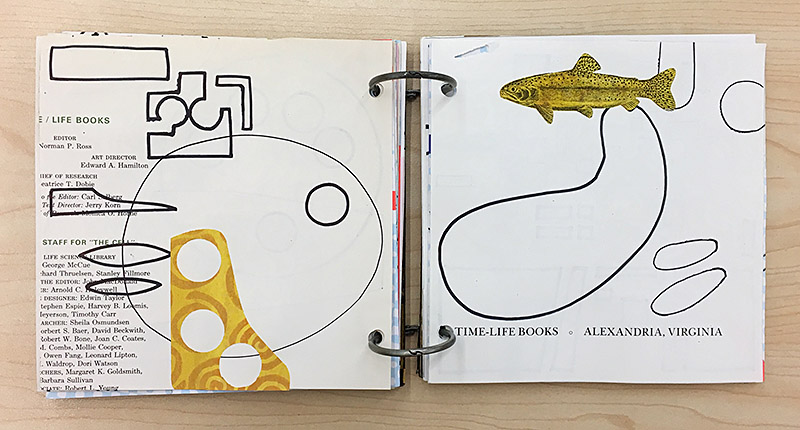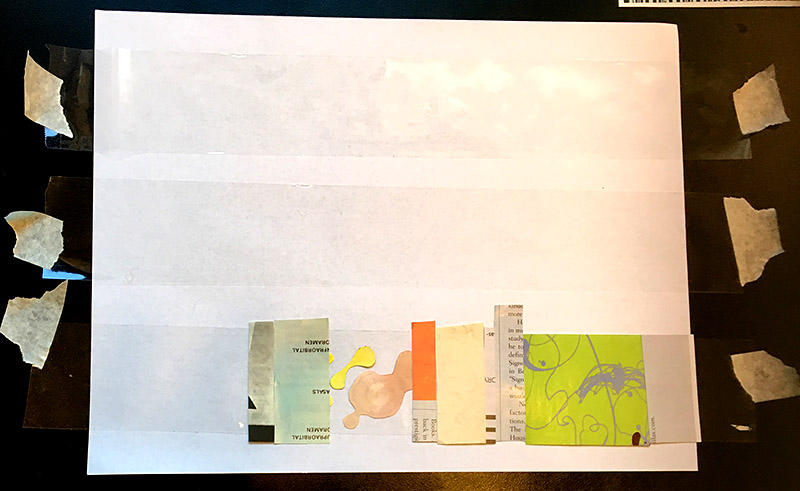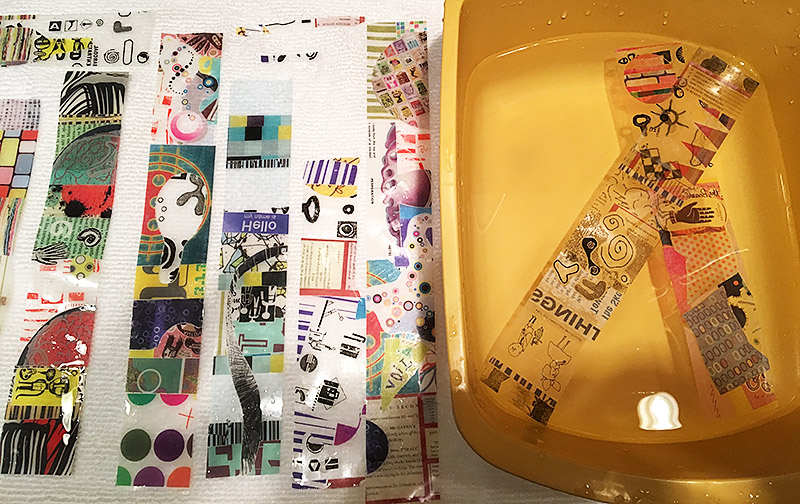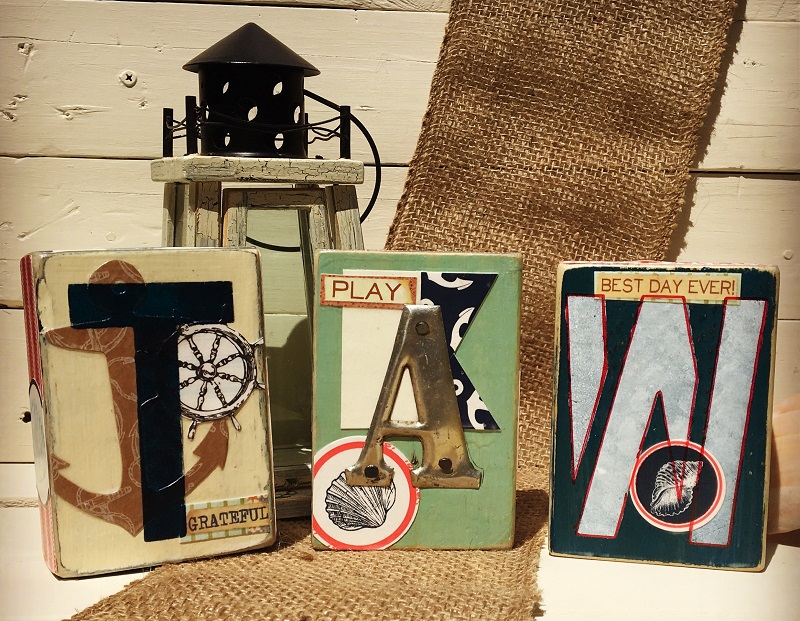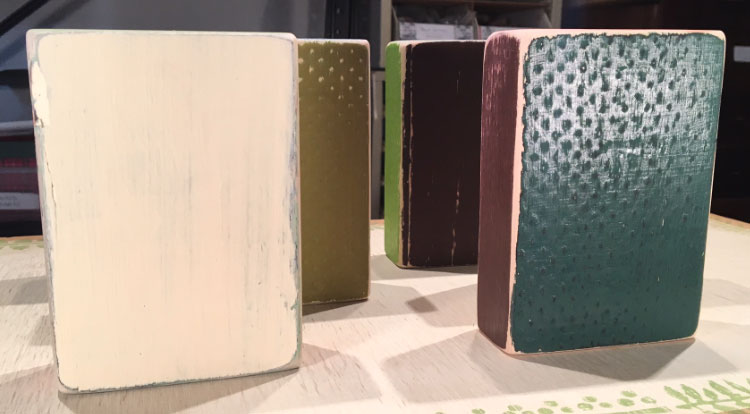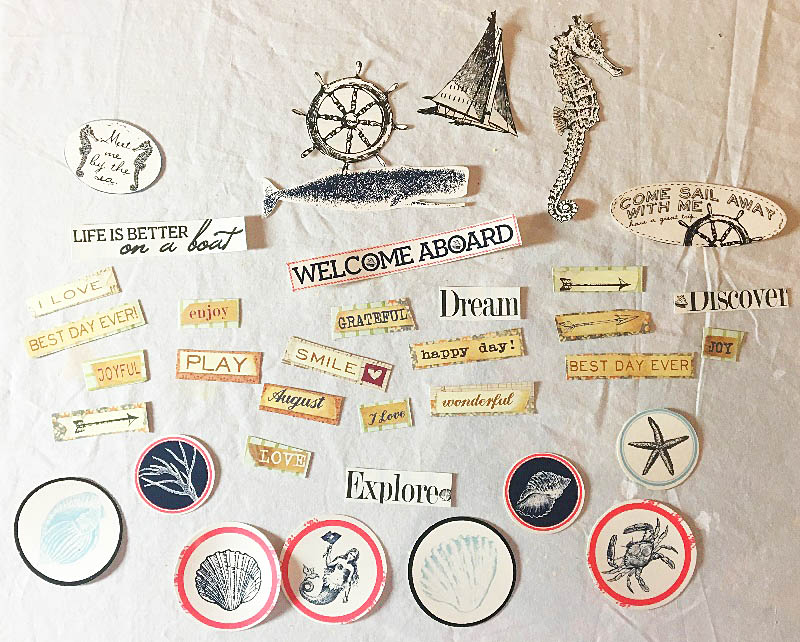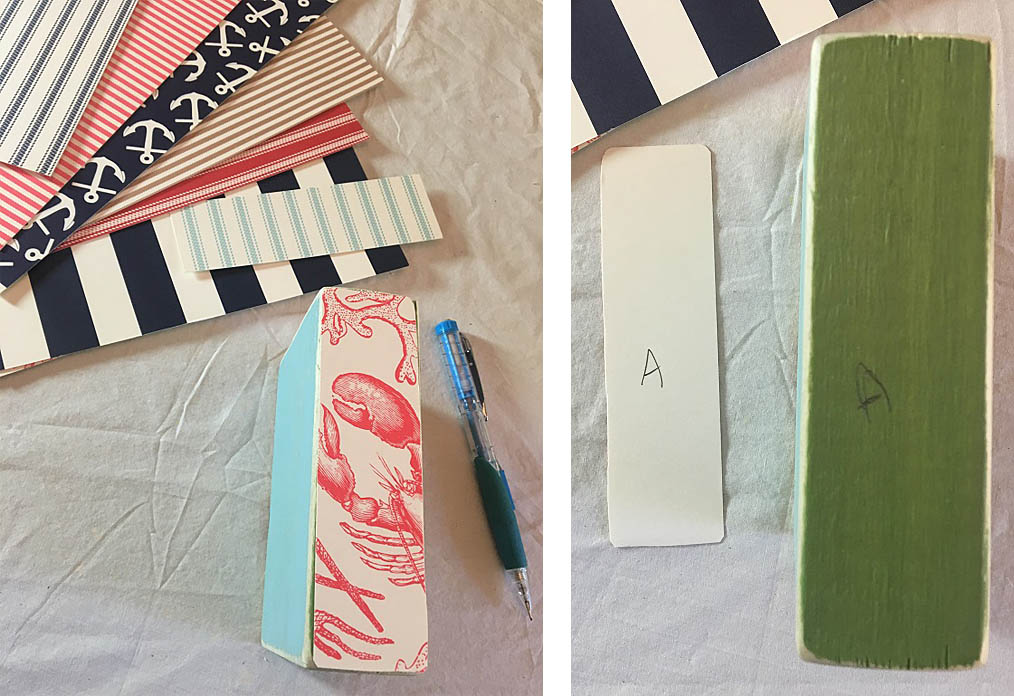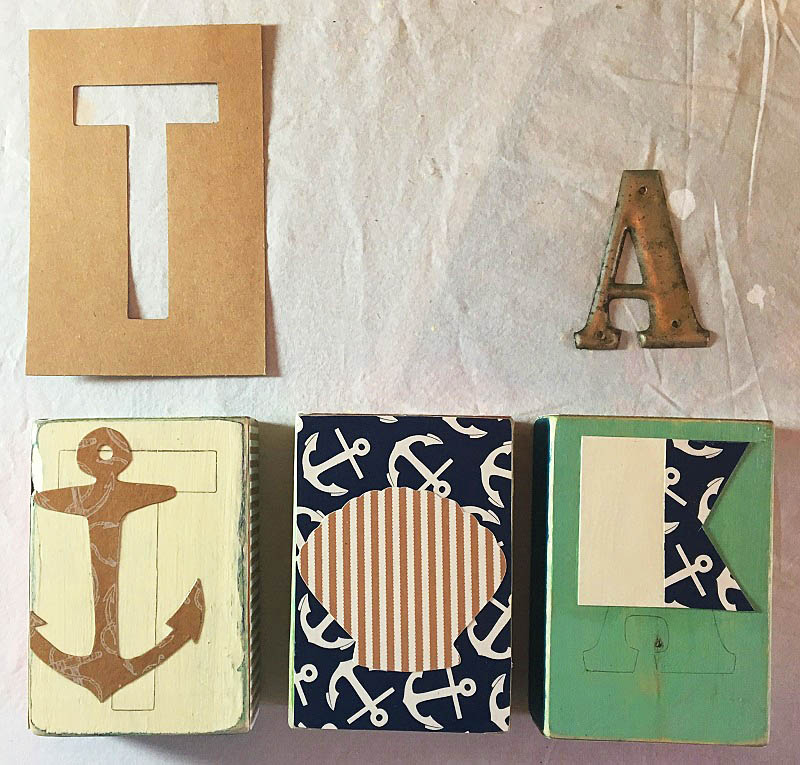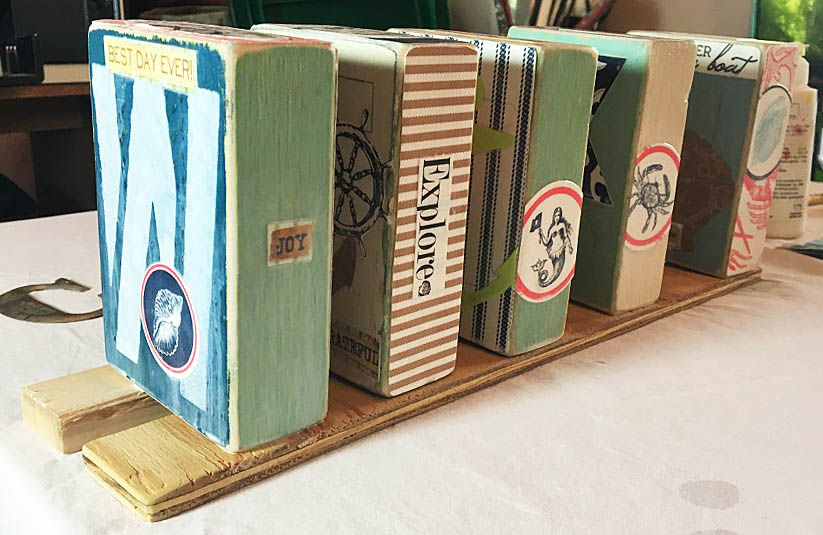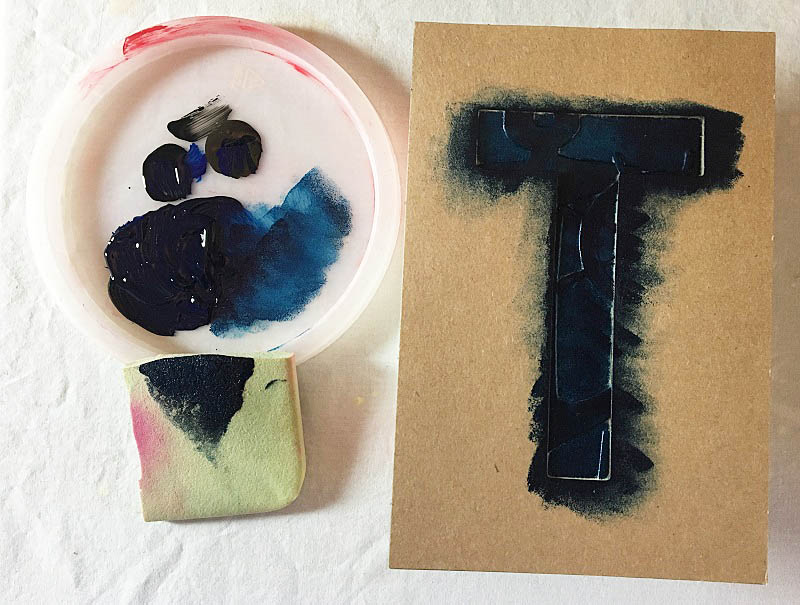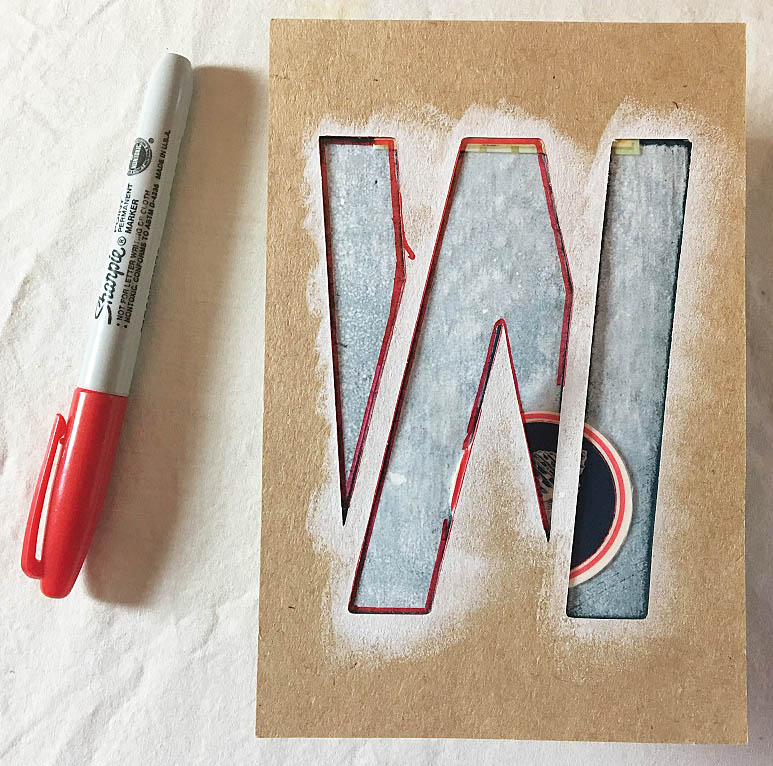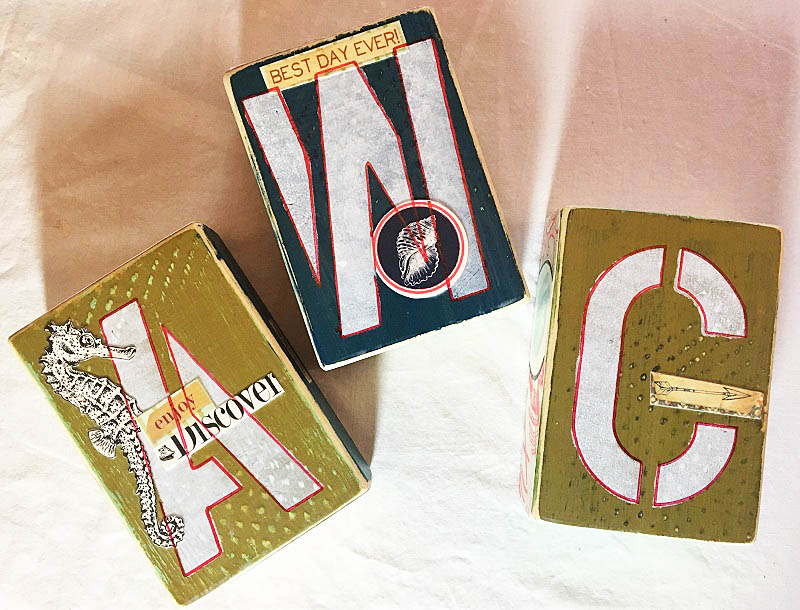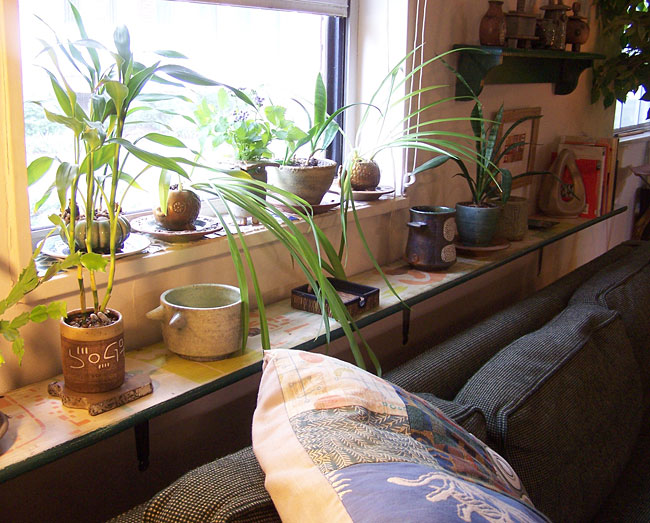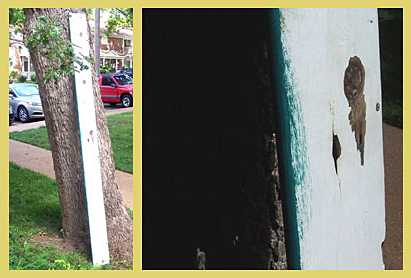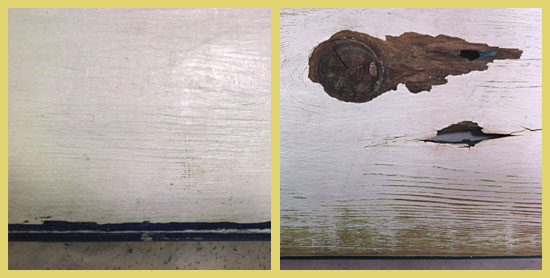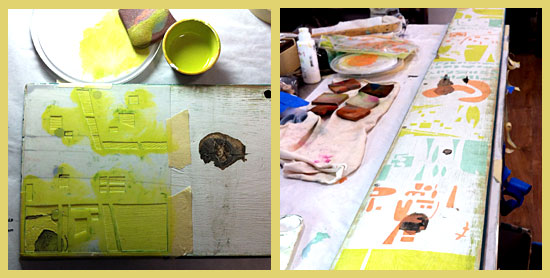Art Journaling With Stencils and Image Transfers
by Carolyn Hasenfratz Winkelmann
Materials (* = items that are available at Schnarr’s)
Scrap mat board or chipboard
Book binding rings* available at Schnarr’s Webster Groves Location
Clean scrap paper
Tracing paper
Clear packing tape – wider strips are the most versatile
An assortment of found papers (pages from old books, magazine pictures, catalog pictures, laserprint copies, paint samples, etc.)
Assorted papers to use as pages – can be drawing papers, art papers or found papers from various sources.
Paper towels*
Tools
Paper cutter
Art stencils* available at Schnarr’s Webster Groves Location
Permanent* and other markers
Colored pencils
Gel pens
Glue sticks*
Hole punch
Scissors*
Pencil*
Ruler*
Masking tape* or painter’s tape* for holding papers and stencils in place while tracing and stenciling
Bone folder, burnishing tool or squeegee*
Basin* filled with water
Clear packing tape*
In case you missed my in-store demo during the Webster Groves Fall Art Walk in October 2018, this art journal book is what I was working on. I chose to work with a lot of abstract designs and random images to have fun with shapes and colors and not worry too much about content. When I was working on my demo, a customer asked what I was doing and I told him. He responded by saying, “I don’t have any kids”. Kids could do a book like this, but it’s fun for a person of any age who likes to experiment with visual media. I’m 51 and I can play with this stuff for hours! Coloring and playing is healthy for anyone to do.
Instructions:
To make the cover, cut two pieces of scrap mat board or chip board into 6″ by 6″ squares.
Punch two holes in each piece along one edge and link with binding rings.
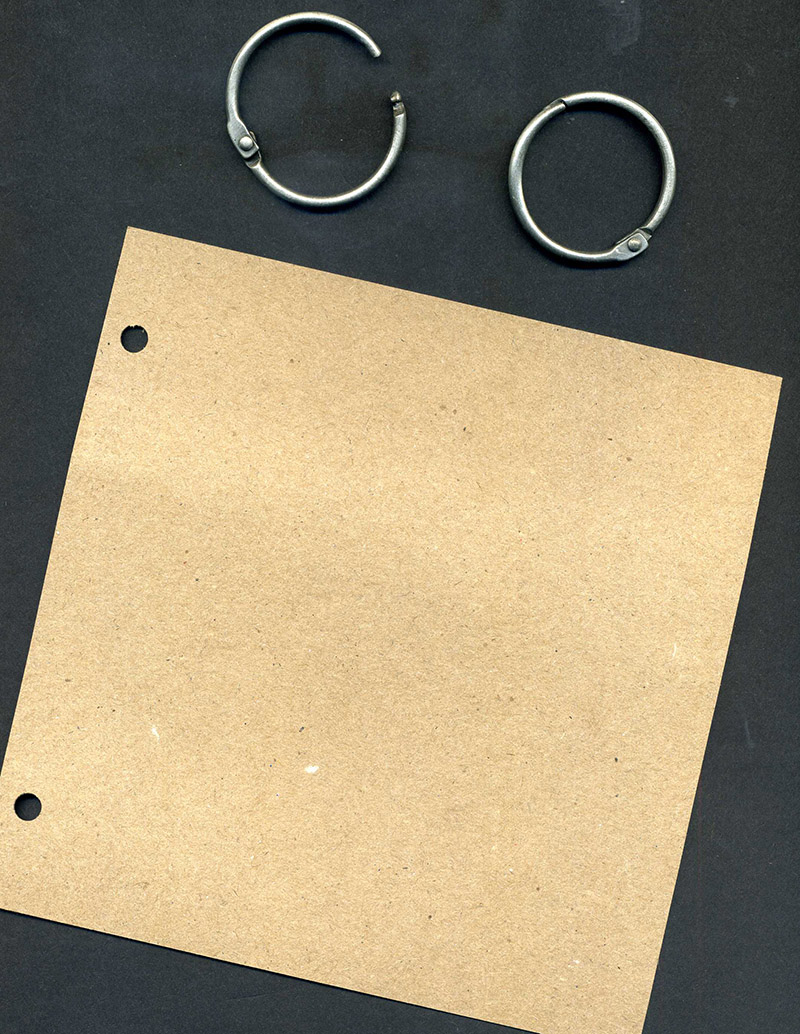
From an assortment of your found papers, cut several pages 6″ x 6″. Using the cover piece as a template, trace circles on your inner pages to indicate where to punch the holes for the binding rings.
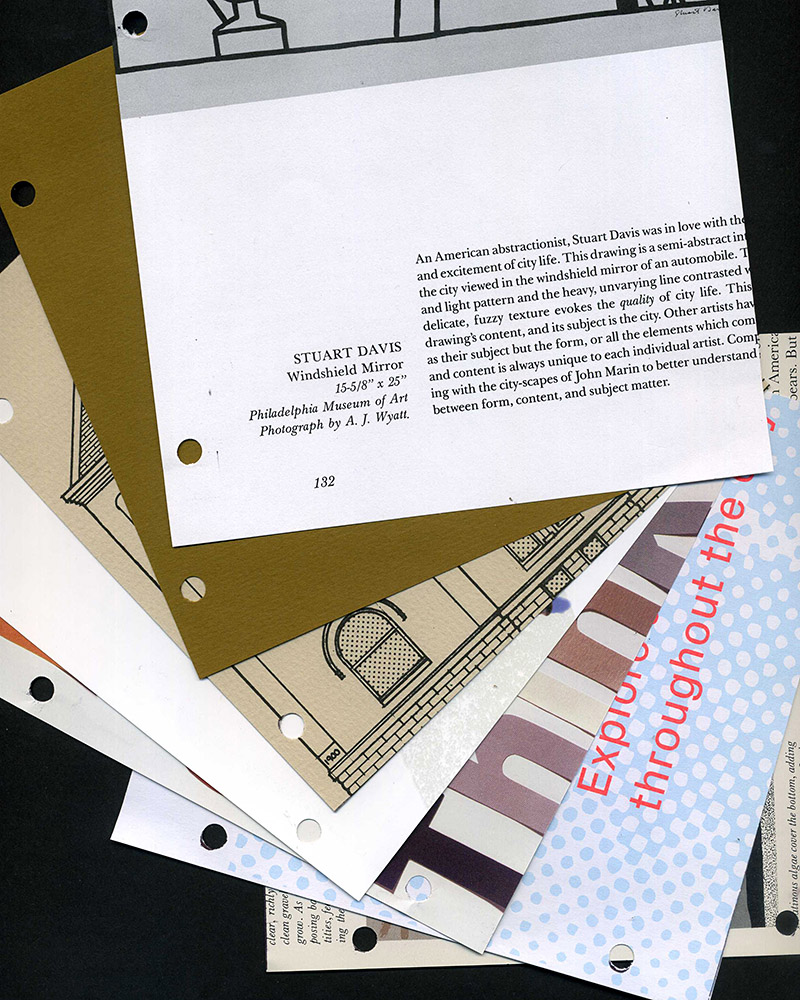
Using permanent markers, draw through some stencils to start some compositions on your pages. The stencils shown in the above sample are stencils that I cut myself. You can cut your own stencils or use pre-cut art stencils. It helps make your work more interesting if you vary the line weight of the markers. Add bits and pieces of collage papers if you are inspired to do so. Glue them down with a glue stick.

Next start making some image transfers to add to your pages from packing tape. Use masking tape to hold strips of packing tape flat on your work surface, sticky side up. Start sticking papers you like to the tape, keeping in mind that the side that connects with the sticky side and faces down is the one that will show. The recommended sources of good papers for image transfers are glossy images from catalogs and magazines, and black and white or color images from a copier or laser printer. Areas that are white on the paper may turn out to be mostly clear or translucent depending on how much ink and clays and minerals are in the paper.
When you have covered the tape with images, turn the tape over and burnish well with a bone folder or squeegee. Burnish in at least three different directions and press hard to make sure all the paper areas make contact with the sticky tape. In the image below, the tape pieces in the center have had the paper removed already, and the strips on the sides still have the paper on the back.
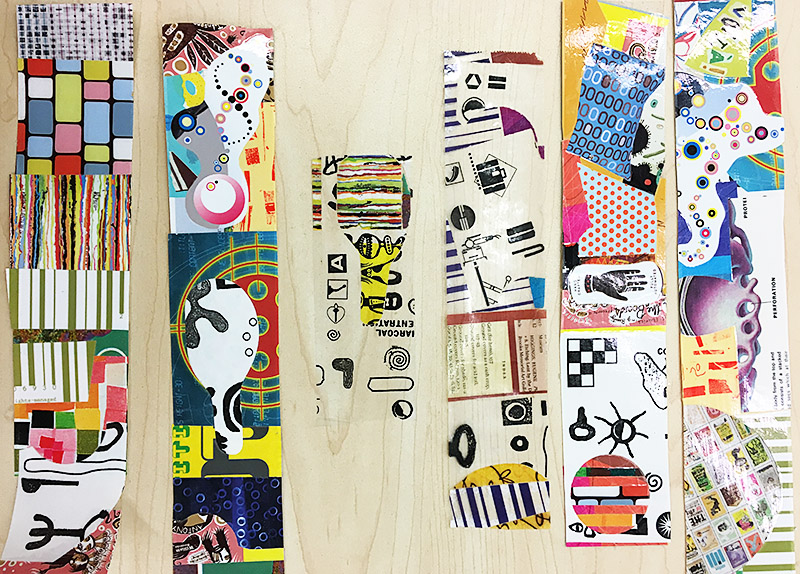
After the tape strips are thoroughly burnished, soak them in water. When the paper on the back gets soft, gently rub it until it peels away. You will probably have to change the water and rub multiple times to get all the paper off. When you are done, only the ink will be left on the tape. Dry the tape pieces sticky side up on paper towels.
When your tape strips are dry, you can apply a glue stick to the sticky side and paste them in your book where you think they’ll harmonize with what you’ve already started. Continue to develop your pages further with coloring implements of your choice and more stenciling and collage if you choose. These little books make a great portable art activity if you carry them around with a selection of your favorite drawing and coloring tools. Here are some of my pages in various stages of completion.
Open the binding rings to insert your pages inside the covers in any order that you like. Decorate the book cover if you want. If you ever want to add new pages, you can just open the rings and insert them where you want them. I put a date on my pages when I consider them complete, and if I am really pleased with them I upload them to my Art Journaling Pinterest board. Have fun!
